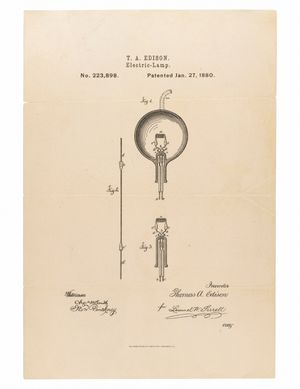Drawing on the $62 billion allowance Congress provided for energy-sector initiatives in the bipartisan Infrastructure Investment and Jobs Act (IIJA), the U.S. Department of Energy (DOE) has announced sweeping plans to secure the country’s clean-energy supply chain, build its energy manufacturing base, and create jobs that will help spur the transition to a low-carbon economy and increase energy independence.
DOE’s new strategy comes in response to an executive order from President Biden to strengthen the resilience of supply chains in several key sectors, including semiconductors, high-capacity batteries, strategically important materials such as rare earth minerals, and pharmaceuticals. DOE hailed its new plan as the country’s first comprehensive energy strategy, comprised of 13 “deep dive assessments” in key areas across the energy sector. These range from nuclear energy to issues such as cybersecurity.
Having rejoined the Paris climate treaty when President Biden took office, the United States has committed to achieving a 50- to 52-percent economy-wide reduction in net greenhouse emissions from 2005 levels by 2030, creating a carbon pollution-free power sector by 2035, and then achieving net zero emissions by 2050.
The report frames DOE’s effort to create a secure, resilient supply chain for clean energy as a critical step in “harnessing emissions outcomes and capturing the economic opportunity inherent in the energy sector transition.”
The plan is organized around seven main thrusts, including increasing domestic availability of raw materials, expanding domestic manufacturing capabilities, and increasing clean energy adoption and deployment.
Energy Secretary Jennifer Granholm expressed hope that the influx of federal investment in the energy sector’s industrial base will allow the United States to be a leader in the global clean energy market, which is expected to reach at least $23 trillion by 2030.
“If we want to stake our claim in that market, we need to make those technologies here in America,” said Granholm. “Right now, we depend on economic competitors like China for the guts of clean energy tech—minerals, batteries, and more.”
.@ENERGY’s first-ever comprehensive supply chain report outlines key opportunities for a robust clean energy transition:
— Secretary Jennifer Granholm (@SecGranholm) February 28, 2022
⚡ Increase energy independence and security
📦 Expand domestic supply chains
👷♀️ Build and support a skilled workforce, and more pic.twitter.com/Z21bahxfUq
With costs dropping in the last decade, demand for electric vehicle batteries and other clean energy technologies such as wind turbines have increased dramatically. Among DOE’s priorities for further innovation are wind technologies to overcome limitations with current land-based wind turbines by manufacturing modular blades, towers, and other large components.
For nuclear energy technology, DOE is working with the Nuclear Regulatory Commission (NRC) to accelerate deployment of advanced reactors that can supply low-carbon heat and electricity for use outside the power sector in conjunction with other clean energy technologies.
New DOE programs will focus on building a supply of the high-assay low-enriched uranium those advanced reactors need. This so-called HALEU fuel is not yet available at a commercial scale.
In addition to supporting deployment of new reactors, bolstering the supply chain in the sector will facilitate the operation of light-water reactors already available domestically. Having an annual output value of around $40 billion, nuclear energy creates more permanent jobs at the local level than any other energy source, according to DOE.
Among other emerging technologies DOE’s plan targets are the special class of “wide bandgap” semiconductors used to control power flow in applications for clean energy generation, electric vehicles, and industrial technologies. Accelerated manufacturing of wide bandgap semiconductors, DOE believes, can therefore provide knock-on benefits in a number of areas that will determine whether the country can achieve its climate goals and cement its global leadership position in a burgeoning sector of the economy.
“The race for the global clean energy market is on,” said Granholm. “So, let’s jam on the accelerator and win it.”






